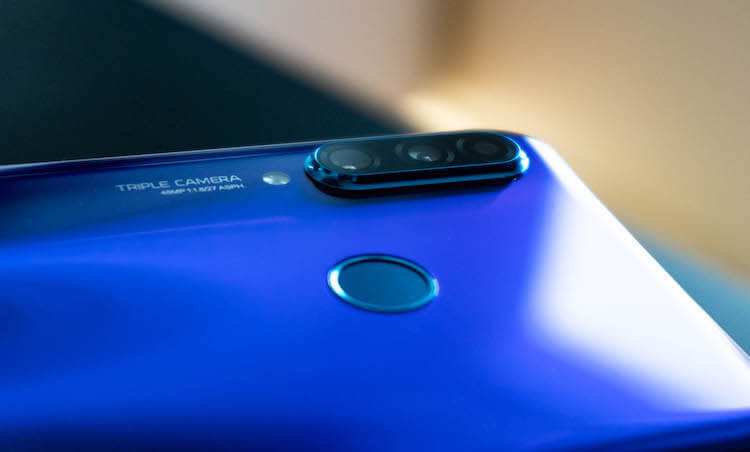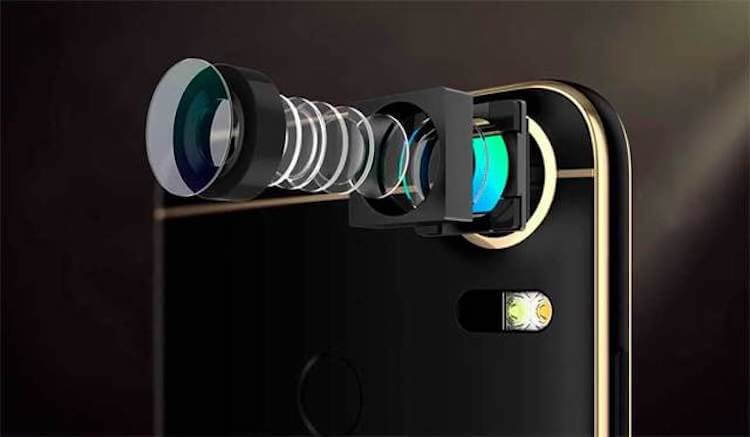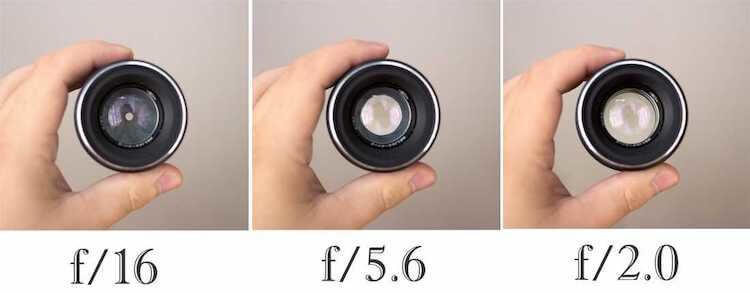One of the characteristics of smartphones that smartphone manufacturers start to boast about from time to time is the aperture. For many, this word is very unusual and incomprehensible. Everything becomes especially confusing when, instead of the aperture, for some reason, they recall some kind of aperture. It seems that the letters were folded into something more familiar, but still nothing is clear. And the biggest question is why the lower the value, the better. Let's try to figure out what is good and what is bad, and what kind of aperture a modern phone should have, so that its manufacturer does not have a herd for it.

The camera is almost the most important element of a smartphone for most buyers.
What is aperture and aperture number
The term “aperture” (also known as “f-number”) is commonly used somewhat erroneously. In our case, it is correct to say “aperture ratio” or “aperture number”. This term refers to the ratio of the focal length of the system to the diameter of the camera inlet.
This ratio is usually expressed as a simplified decimal fraction in which the numerator is often omitted. For example, you can find “f / 1.8” or more complete designation – “1: 1.8”. You can also sometimes find the notation F1.8 This is enough for a knowledgeable person to understand what the speech is about.
Why is aperture important for smartphone cameras?
The lower the aperture number, the more light can reach the image sensor. Everything here comes from the definition – the lower the value of the aperture ratio in numerical terms, the more light hits the matrix or film. Moreover, the dependence is quadratic. That is, f / 2 is twice as good as f / 4, and f / 1.4 is about twice as good as f / 2.

Difference between aperture values in comparison.
It is also worth understanding that the more aperture and the more the aperture is open, the shallower the depth of field will be. That is, only the subject will be in focus, and the rest of the background will be blurred. This is how the bokeh effect is achieved in serious cameras. In smartphones, this is usually done in software. Therefore, there are frequent mistakes when, for example, the area of hair, ears or the space at hand is not processed.

The smartphone camera is technically very similar to the real one, but the proportion of software processing in it is much higher.
If we want everything to be in focus, then we need to cover the aperture as much as possible. In this case, less light will fall on the matrix, but everything will be in focus. Smartphone cameras usually automatically adjust this setting. If you want to decide for yourself what should be in focus, then you need to go to other settings.
It may seem that the camera values do not converge. That is, at aperture f / 2, the focal length can be 25 mm, and the aperture – 12.5 mm. These values are hardly possible in the case of a miniature smartphone body. This is due to the fact that it is customary to indicate the equivalent of a 35 mm camera. That is, a full-fledged photographic device, and not its little brother in a smartphone.
The diagonal of the smartphone camera sensor is several times smaller than the sensor of a 35 mm camera. On average, this is about 4-6 times. This deviation is called the framing factor. The 35 mm value is multiplied by this factor and the actual focal length is obtained to achieve the same angle of view.

In the picture, such a camera is large, but in reality everything is measured in millimeters and fractions of millimeters.
In reality, it turns out that the actual focal length is not enough in the smartphone, namely, it is the determining factor of beautiful blur. As a result, software processing inside the smartphone is applied to enhance the effect. That is, it is impossible to say that the camera of some smartphone beautifully blurs the background. It is not she who blurs, but her software. But why, then, is a smaller “F” value better than a larger one?
While aperture size has a significant impact on bokeh in full cameras, this effect is negligible in smartphones. This is because smartphone cameras usually do not have the ability to adjust the aperture size for use as a creative design option. But we'll come back to this idea later.
Instead, the focus is on the intensity of the light. For example, an improvement from F2.4 to F1.7 means the smartphone has twice the available light for photography. This, in turn, allows you to reduce the light sensitivity (there will be less noise) and a slower shutter speed (there will be less blur).

Samsung Galaxy S9 + camera in different aperture modes.
It sounds nice, but nowadays, when it comes to a small camera, like a smartphone camera or an action camera, it is much more important how the picture will be processed programmatically (added blur, removed inevitable noise, and so on).
That is, if you take a smartphone camera with a telemodule, then it has a much lower aperture, and this forces the camera to set a much higher ISO value, which leads to noise. Or increase the shutter speed, which will make the picture blurry without using a tripod. As a rule, the first option is chosen and then the magic of processing begins, which often just spoils the picture, because the ISO value can increase, for example, from 100 to 1600 or 3200.
As a result, you need to understand that when you are told from the stage that the camera aperture of the new smartphone is f / 1.7, and the competitor has only f / 1.8, then this in fact will hardly change anything, since the difference is too small. In this case, you need to understand which sensor the camera uses and how much better it is used by competitors.

This is how the camera looks clearly in different aperture modes.
Manufacturers often buy the same sensors from Sony or Samsung, which reduces the difference in cameras from a technical point of view altogether to zero. In this case, how the camera processes the image is more important, and here everyone has their own secrets, because among the flagships, this is what determines the leader. Therefore, the same brands are often at the top of the rankings, although others use the same sensors.
Do not be fooled by the tricks of marketers and beautiful numbers, but look at the real result and data from independent tests.
